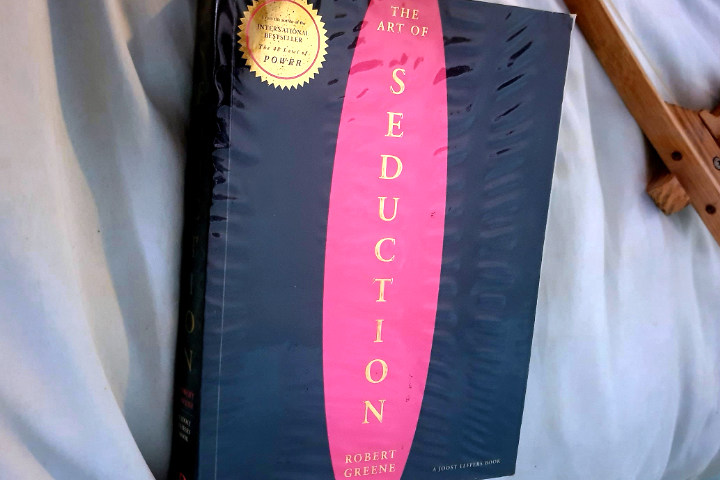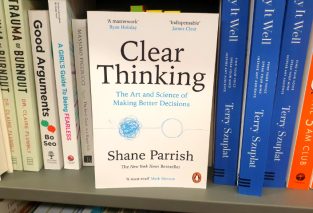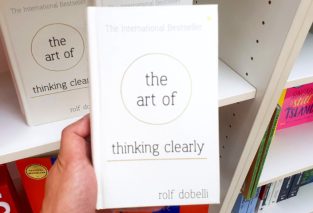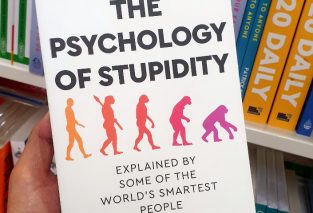A book that teaches how to attract and influence others by understanding human behavior using charm, confidence, and strategy. it explores psychological tactics to build powerful connections and create irresistible allure.

Robert Greene’s The Art of Seduction is a provocative exploration of human nature, a manual for understanding the intricate dynamics of attraction and power.
Written with the precision of a master tactician, the author dissects seduction as both an art and a science, laying bare the psychological mechanisms at play in intimate and social relationships.
A masterful look into the enigmatic dance of attraction, power, and influence. With an analytical lens that dissects the psychological intricacies of seduction, offering a panoramic view of its various forms and strategies.
The book, which spans a rich array of historical anecdotes, psychological insights, and strategic wisdom, is not merely about romantic or physical allure. It delves into the broader concept of how individuals can shape perceptions, manipulate emotions, and influence others in both overt and subtle ways.
It is an in-depth analysis of human behavior and the subtle art of persuasion that permeates all facets of life.
Far from being a mere guide to charm, book taps into the primal and often unconscious forces that govern human behavior.
The approach to seduction is not one of conquest but of transformation.
The treatise suggests that seduction is not a simple, transactional exchange. More of an elaborate dance in which the seducer and the target play their roles in a complex interplay of influence.
The book is divided into sections that lay out types of seducers, seductive strategies, and the various stages of seduction.
The seductive process unfolds in phases: from initial approach, to creating a sense of mystery, to eventual victory, which often involves leaving the other party with a sense of longing.
In many ways, Greene portrays seduction as a game.
One in which the stakes are not necessarily physical possession, but rather the power to sway, shape, and control.
One of the most fascinating elements of the book is its exploration of the psychology behind attraction.
It unearths the deep-seated drives and desires that lie within both the seducer and the target.
From the charismatic Siren to the elusive Coquette, the author classifies these archetypes with precision, illustrating their unique allure and psychological underpinnings.
His prose captures the essence of seduction as a timeless and universal force, transcending cultural and temporal boundaries. It’s as if readers are invited to a masquerade ball where each mask represents a different facet of desire.
The seducer for example, must be aware of these hidden motivations and know how to both appeal to and manipulate them. Seduction is not simply about external beauty or charm but about creating an experience for the other person. An experience that taps into their desires, their fantasies, and their vulnerabilities. The seducer’s role is to cast a spell that bends the will of the other person without them even realizing they’re under its influence. It is about planting ideas in the mind, about making the other person feel unique, wanted, and understood, all while controlling the dynamics of the interaction.
The intricate exploration of seduction is also deeply rooted in historical examples.
Throughout the book, it draws on figures from history. Like Cleopatra, Casanova, and even modern figures like the enigmatic Howard Hughes. Showing how they employed seduction as both a personal tool and a means of achieving their larger goals.
These examples demonstrate how seduction can be a weapon of power, a tool of manipulation, and sometimes, even a form of self-preservation.
What’s striking in these historical case studies is how seduction, though often thought of as a personal affair, can shape the broader course of events.
Whether it is political maneuvering, social dynamics, or the building of empires, seduction has long been a mechanism for achieving influence and success.
Shortcomings
At times, the book veer into manipulation and ethical ambiguity.
The vision of seduction is undeniably powerful, but it often dances on the line between influence and exploitation. Just when you thought you could categorize it as either, it jumps across the line to the other side again.
It positions seduction as a tool for gaining power over others. This could be seen as problematic for readers who may interpret the tactics as morally dubious.
While it does not advocate coercion or deceit, the strategies he outlines can easily be taken out of context or misused.
The fine line between influence and manipulation is thin, and the treatment of seduction at times appears to blur that line.
To improve the book, more emphasis could have been placed on ethical boundaries within the dynamics of seduction.
A more nuanced discussion on consent, emotional responsibility, and the impact of seduction on both parties would have grounded the ideas in a more socially responsible framework.
As it stands, the book offers a fascinating exploration of human dynamics, but it could benefit from more clarity on the importance of ethical considerations when applying these strategies.
Because in a modern world where personal boundaries and respect for autonomy are of growing importance, seduction cannot solely be viewed through the lens of manipulation and control. It must also take into account the moral consequences of such actions.
Some might find that the contents occasionally borders on cynicism in its portrayal of human relationships. The emphasis on strategy and manipulation can be somewhat disheartening, as it risks overshadowing the potential for genuine connection and empathy.
To address this shortcoming, Greene could benefit from incorporating more examples where seduction is used positively to build trust and deepen relationships.
I would love to see more storied examples from modern history.
There is also an underlying tension in the book when it comes to its treatment of love and emotional depth.
While the seducer is often depicted as an archetype of control and strategy, the emotional consequences of such tactics are rarely explored in full.
What happens when the seductive game ends? What emotional aftermath lingers when one party is left to reckon with the feelings of desire and attachment that have been kindled and then extinguished?
The book focuses on the pursuit and conquest, but offers little insight into the consequences of those conquests.
A more in-depth exploration of the emotional ramifications of seductive behavior would not only enrich the book, but also provide a fuller picture of what is gained and lost in the pursuit of power through seduction.
But if I’m being honest, Greene’s seductive approach to writing is hard to resist.
Biggest Takeaway
The dissection of power dynamics and the way in which seduction operates on both conscious and unconscious levels.
At its heart, The Art of Seduction is not a how-to guide for superficial flirting or quick wins, but a detailed analysis of the deeper forces that govern our relationships.
The author doesn’t just teach how to create attraction.
He teaches how to manipulate the environment, how to read the subtle cues that reveal a person’s desires, fears, and weaknesses, and how to tailor one’s actions to match those cues.
There’s an understanding here that seduction is not about the other person. It’s really about you, the seducer, and the mastery of your own actions and intentions.
The awareness that seduction, when understood and practiced strategically, allows an individual to wield a quiet, almost invisible power over those around them.
This is a compelling and thought-provoking read examing of one of humanity’s most enduring forces
One that challenges our assumptions about power, attraction, and influence.
Seduction is an art form.
An intricate dance that requires self-awareness, empathy, and finesse. By honing these qualities, we can navigate the complexities of human interaction with greater confidence and understanding.
But remember that while seduction is often shrouded in mystery, it is ultimately an expression of our innate desire for connection and intimacy.
Another compelling element is its ability to illuminate the power dynamics inherent in seduction. It delves into the psychological motivations behind why we are drawn to certain personalities, dissecting the interplay between vulnerability and control.
This exploration is both captivating and unsettling, prompting readers to question their own perceptions of attraction and influence.
The insights challenge us to recognize seduction not as manipulation, but as a nuanced interaction that can foster genuine connection when approached with authenticity.
It offers a blueprint for mastering human behavior, but in doing so, it also raises questions about the ethics of such mastery.
The art of seduction not as a means to an end, but as a journey toward deeper understanding and authentic engagement with others.
For the discerning reader, it provides invaluable insights into the way we relate to one another and the hidden forces that shape our interactions.
Yet as with all tools of power, it requires careful handling.
The seduction being taught is not simply a skill. It is a responsibility.
To seduce is to wield influence. And to wield influence is to understand the impact it has on both yourself and those you seek to influence. If wielded wisely, the art of seduction could indeed be as powerful as transforming not just relationships, but entire lives.
And that could be towards the better, or the worse.




